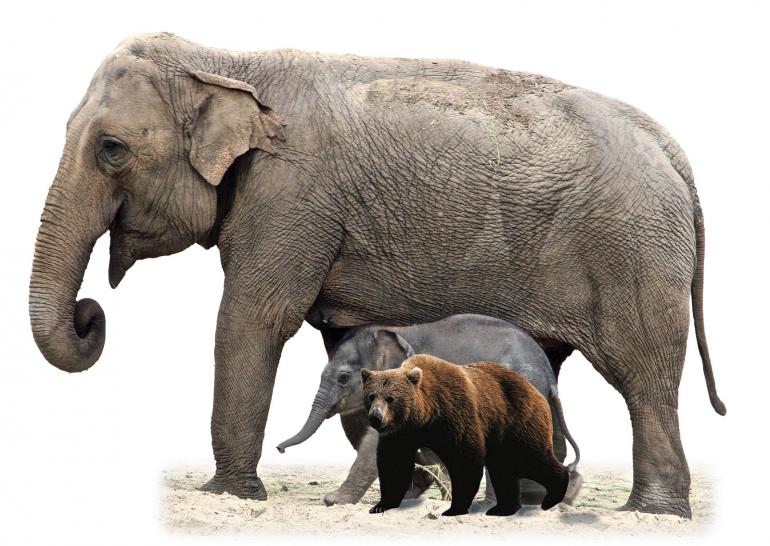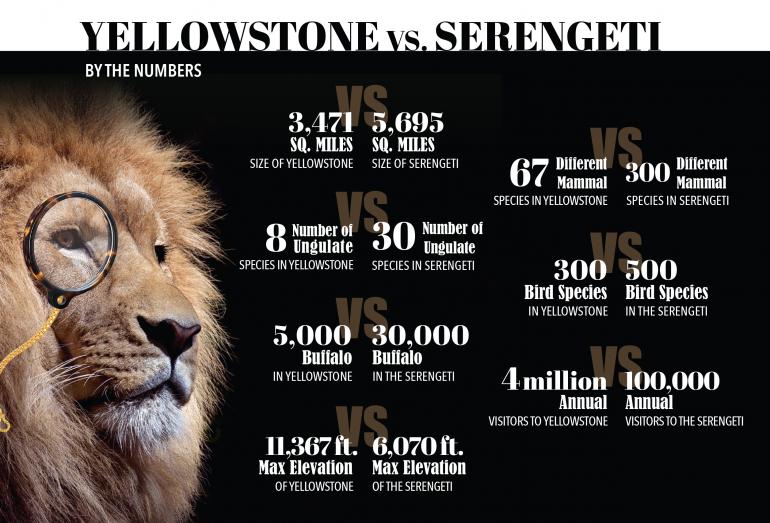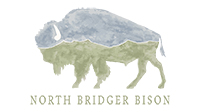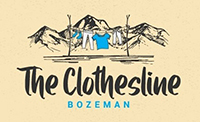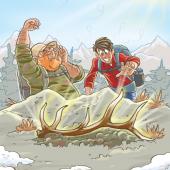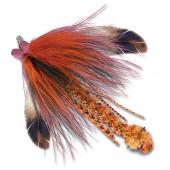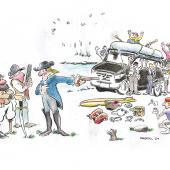Beyond Compare
Yellowstone is NOT the Serengeti of North America.
Yellowstone Park is our region’s pride and joy. Even though most of its land is in Wyoming, we Montanans like to claim it as our own. Recently, there were substantiated murmurs claiming it to be the best park in the nation, and arguably the world. That is, until Serengeti National Park caught wind of them. This is what our African cousin had to say.
Dear Yellowstone National Park,
It’s come to my attention that you have been using my name (Serengeti National Park) without my permission as a means of promoting yourself. Please, stop. While you may be the wildest wildlife locale in the Lower 48 of the USA, you’re not really in the same league as me.
For starters, I’m way bigger than your measly 3,500 square miles, especially if you include the contiguous Maasai Mara Reserve, Ngorongoro Conservation Area, and other wildlife conservancies. Size does matter, no?
Certainly, your 20,000 elk that seasonally migrate in and out of the park are fascinating creatures (those antlers!). But they do not compare to our 1.5 million wildebeest and 200,000 zebras that undertake the Great Migration each year, trekking thousands of miles around our park, braving treacherous crocodile-infested river-crossings and a litany of other predators. Do you even have crocodiles?
Your nearly 800 grizzlies are surely big animals, but they are not elephants, which are 20 times heavier, and of which we have 10 times as many. When do you even see those bears anyway, since they spend half the year sleeping? Of course, I’m sure you’re also amazed at how both of these massive creatures can seemingly disappear behind a bush or a tree.
I know that your 500 or so pronghorn are faster than any of our 30 species of ungulates (impala, Thomson’s gazelle, waterbuck, and eland, to name a few), but I’m pretty sure that one of our 300 cheetahs could nab a speedgoat without much difficulty.
Yes, I know you also have lions, but they don’t even have manes, and I’ve heard that you barely ever see them, anyway. What’s the point? If you’re going to call yourself a lion, come out and be seen! I mean, these overgrown, tawny housecats of yours are a laughing stock next to a real African lion who will sleep right out in the open, because it knows it’s at the top of the food chain. Mountain lion? I don’t think so. Maybe catamounts or wildcats, but please, they are not lions.
Your bison are impressive (so fuzzy!), but we have more Cape buffalo (30,000 to your meager 5,000). Even though yours might be a little bigger, I think we both agree that ours have better horns. And you do make a fair point that yours are more photogenic than our grumpy, dour-faced ones. Still, your settlers decimated the population and now the remaining 5,000 are just a fraction of the great numbers that once roamed your West, the way ours still roam Tanzania’s North.
|
|
You might also show some deference to our local cowboys, the Maasai, who have been herding for much longer, have better outfits (no assless chaps here) and are actually warriors, not part of some tobacco-chewing, beer-drinking, gun-toting sub-culture that plays army on the weekends. I jest. Actually, American cowboys and African Maasai probably have a lot in common, and I know that it’s not always easy living on the doorstep of a wildlife-conservation area. Human conflict with wildlife is also an issue for us. Predators kill livestock here in Tanzania, too, but livestock are not a threatened or protected species. Doesn’t your great state of Montana have twice as many cows as people? Surely your cowboys have made efforts to protect against predators, no?
And your weather. How does anything survive those frigid single-digit winter temps? It’s always warm here, just south of the equator, even in our rainy season.
I’ll give credit where credit is due—you’ve done a wonderful job recovering your wolf population over the last 25 years. It now appears to be 100 strong and growing... though I guess it’s only 99 after your governor killed one? The knock-on effects of the re-introduction project are fascinating, like new stands of aspen and willow, and more stable moose and elk populations. We have struggled with our African wild dog (also known as the painted wolf) population, which was wiped out through snaring and poaching—another example of our own human-wildlife conflicts and challenges. We have high hopes to imitate your success with our own fledgling reintroduction program.
|
|
A word of caution to Montana: be careful with your proposals to drastically reduce your predator populations (bears and wolves) through snaring, night hunts, hound hunting, and other dubiously ethical means. It is, after all, your very wildness and prolific wildlife that make Montana special (especially compared to Idaho and Wyoming) and bring visitors and their dollars to your state—a bounty that is, admittedly, much larger than our own. Take heed from some of the nation states in Africa: no wildlife means no tourism.
Finally, while we are both no doubt great parks, give yourself some credit and be your own park. Stop calling yourself the Serengeti of North America—you’ve got a long way to go. Come visit sometime, I’d be happy to show you around.
Sincerely,
Serengeti National Park
Tanzania, East Africa
Chris Moriarty is an Africa travel expert and owner of Moraway Adventures in Bozeman. He’s been actively exploring the African continent for the past 20 years. Living on the edge of Yellowstone is a wild experience, but still not as wild as some of the great parks of Africa.


